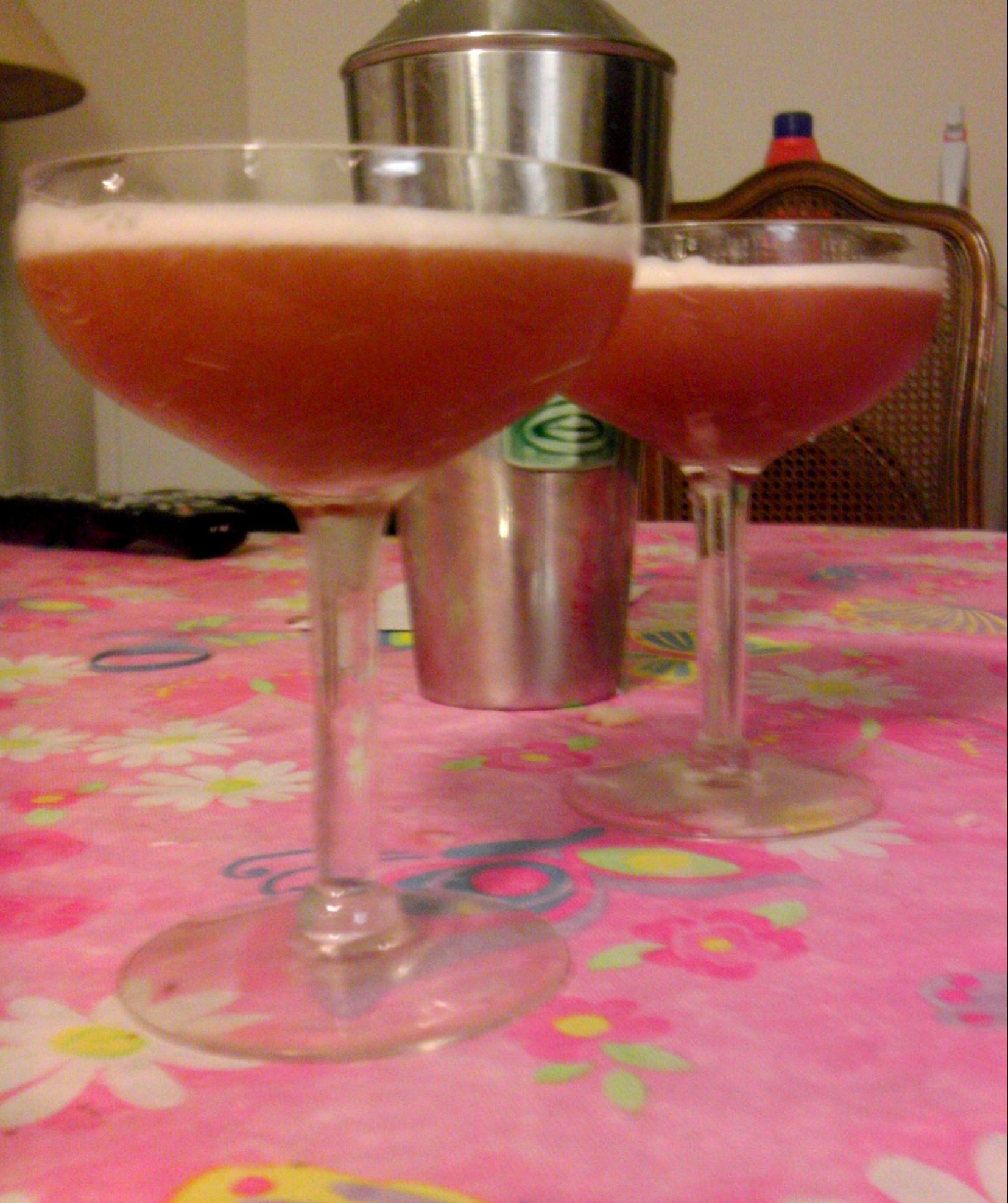 I am supposed to be mildly allergic to red wine. In fact, it was the discovery that wine tasting trips tended to give me a mild, brief malaise — somewhere between a feeling of actual sickness and very mild depression — that started me thinking a bit more seriously about the possibilities of hard liquor some years ago. Still, life has its way of surprising you and I’ve found a few drinks involving red wines that I’ve liked quite a bit. They mostly seem to involve egg white.
I am supposed to be mildly allergic to red wine. In fact, it was the discovery that wine tasting trips tended to give me a mild, brief malaise — somewhere between a feeling of actual sickness and very mild depression — that started me thinking a bit more seriously about the possibilities of hard liquor some years ago. Still, life has its way of surprising you and I’ve found a few drinks involving red wines that I’ve liked quite a bit. They mostly seem to involve egg white.
The wine in question is usually port or sherry, and that’s the case this week with a drink I found in Dale DeGroff’s The Craft of the Cocktail which he, in turn, found in the 1934 tome, The Artistry Of Mixing Drinks, written by Frank Meier of Paris’s Ritz Bar. Like most drinks of this era, it can also be found in The Savoy Cocktail Book. Most of the modernized versions you’ll find online, however, differ significantly from this week’s drink — significantly enough that I might consider actually revisiting it in a different formulation later on. In the meantime, I’m sticking with a minor variation of Mr. DeGroff’s recipe for this Friday the 13th. It’s pretty much the classic formulation in any case.
The Elk’s Own
1 ounce rye or Canadian whisky
1 ounce port
1/2 large egg white
1/2 ounce fresh lemon juice
1/2 ounce simple syrup of 2 teaspoons superfine sugar
Since measuring out half of the egg white of a large egg might be tricky, consider doubling up on the Elk’s Own and making two drinks. Even if it’s just you, it’s tasty enough you might want to drink both.
Combine all the ingredients in a cocktail shaker and shake without the ice. Then, add plenty of ice cubes and shake once more, this time quite vigorously. Strain into a cocktail glass or glasses and toast the Elks Lodge. We’re not at all sure they had anything to do with this drink, but I’m sure they could use a salute.
*****
I didn’t have as many chances to play around with this week’s drink as I’d have liked, so I didn’t manage to even try the more stiff/modern style version; it ups the amount of whiskey to about 1 1/2 parts and the port down to 3/4 of an ounce but uses an entire egg. Some other time, for sure.
Getting down to my choice of ingredients, I used an inexpensive bottle of tawny port that I had on hand, but some people seem to lean towards ruby port, which might be another excuse to revisit this one at a later date. For my hard liquor, I went with my beloved Canadian Club on my first try, as Mr. DeGroff specifically calls for Canadian whisky. Later, I went with the understandably very popular Redemption Rye. As implied by the directions, I made two drinks each time using one large egg white, out of respect for the for the fact that the DeGroff recipe called for a small egg white, and where the #3$#@$ do you find a small egg these days?
My substitution of two teaspoons of sugar if you don’t have any simple syrup handy is a highly educated guess that I’m pretty sure will work. I didn’t have the opportunity to try it out during a particularly crazy week.
Every version turned out just dandy, but I have to say I especially enjoyed the less complicated charms of the DeGroff Canadian Club iteration. Redemption Rye may be the better product on its own but, for this one, I think you can definitely save your money and reduce the alcohol volume a bit downwards if you want.
As to why this was a particularly crazy week, for starters, I successfully fought of a cold virus through the magic of zinc, drowsy Robitussin DM, no booze, and tons of sleep over last weekend. [CRUCIAL UPDATE: Actually, I wasn’t successful; the cold came back with a vengeance the day before I posted this. The world must know!] More notably, I closed escrow earlier this week on the new location of Drink of the Week Central. That means my and my outsize staff of researchers, chemists, molecular gastronomists, expert horticulturalists, and inebriate engineers will be moving over the coming weeks.
It’s good news for the hardy DOTW team and should, at least, lead to better drink pictures. The alarming consequence for you, however, is that it also means we may be taking a week or two off in the coming six weeks or so — just moving all the bottles should take a solid week! You’ve been warned.
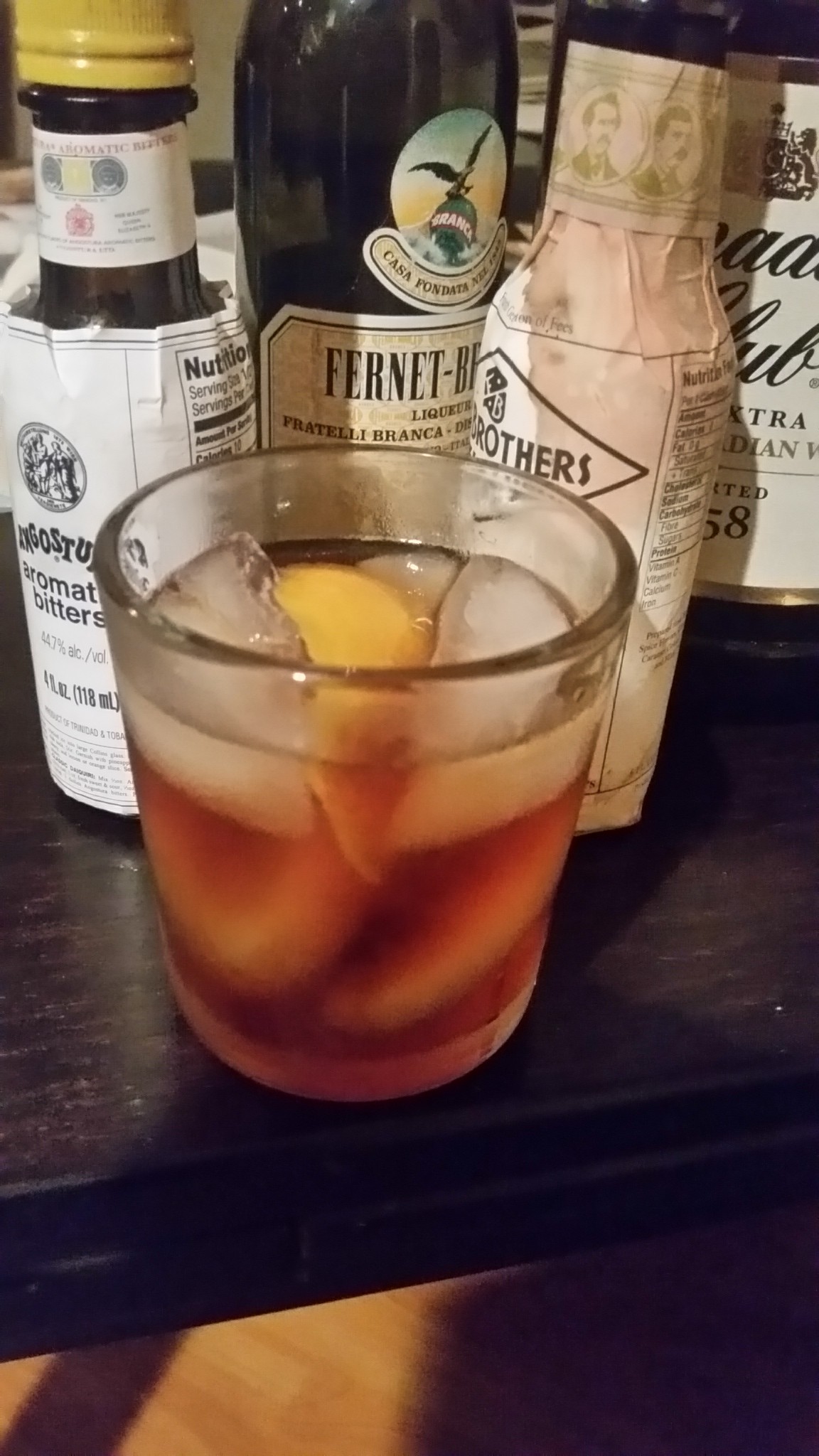 Last week’s drink might have been a bit uncertain when it came to its geographical underpinnings, but this week’s is pretty clear that it’s an homage to Canada’s most populous city, a place I have not yet had the pleasure of visiting. The Toronto Star traces its origins to a 1922 cocktail book written by a London-based bartender who claimed the drink was a favorite of Torontonians but noted that the province of Ontario had its own version of prohibition between 1916 and 1927. Moreover, there’s no other known connection between the drink and the particular city it’s named for. That being said, it’s a truly worthwhile classic cocktail that can stand proudly beside any other city-named drink you can think of.
Last week’s drink might have been a bit uncertain when it came to its geographical underpinnings, but this week’s is pretty clear that it’s an homage to Canada’s most populous city, a place I have not yet had the pleasure of visiting. The Toronto Star traces its origins to a 1922 cocktail book written by a London-based bartender who claimed the drink was a favorite of Torontonians but noted that the province of Ontario had its own version of prohibition between 1916 and 1927. Moreover, there’s no other known connection between the drink and the particular city it’s named for. That being said, it’s a truly worthwhile classic cocktail that can stand proudly beside any other city-named drink you can think of.
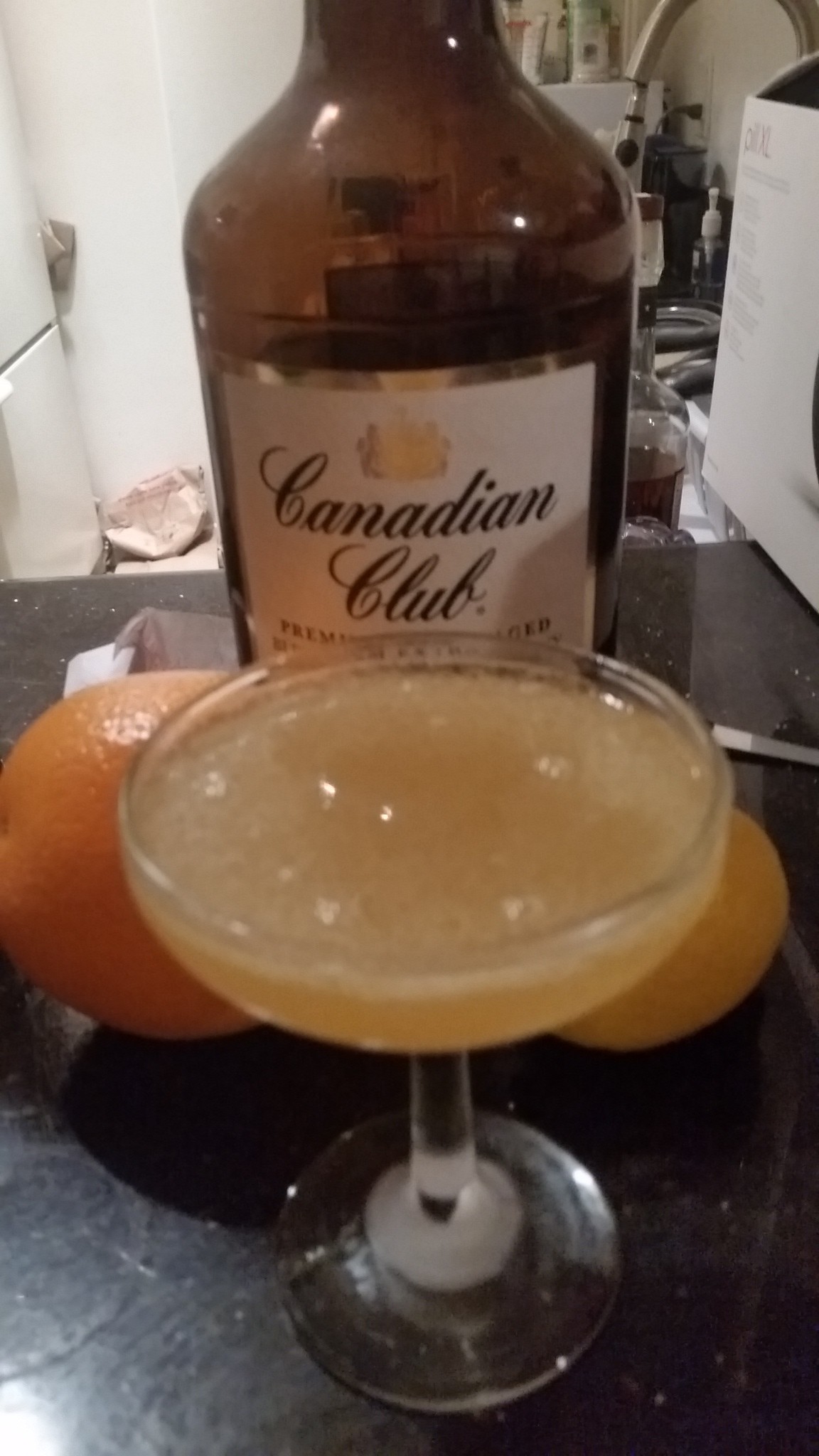 First of all, let’s get one thing straight: no tigers were juiced in the making of this DOTW post. Moreover, I’m pretty sure, the makers of Tiger’s Milk bars don’t actually have the courage to milk actual members of the feline genus panthera to make their product.
First of all, let’s get one thing straight: no tigers were juiced in the making of this DOTW post. Moreover, I’m pretty sure, the makers of Tiger’s Milk bars don’t actually have the courage to milk actual members of the feline genus panthera to make their product.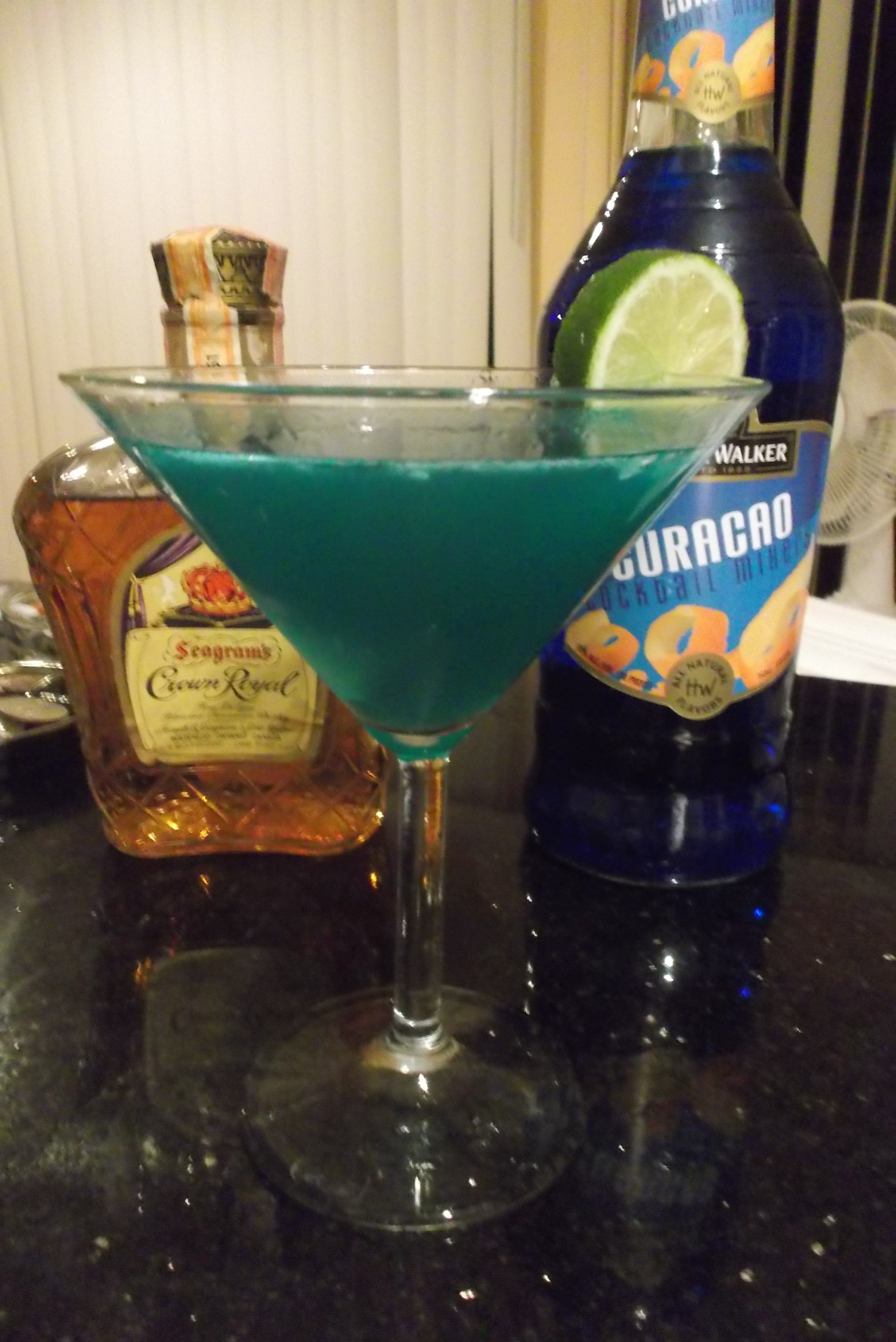 Memorial Day weekend of 2014 is about to get underway. For most of us, it’s just another Monday holiday and the gateway to summer vacation time. For those of us who have lost someone important in one of America’s wars, however, it’s another kind of day entirely.
Memorial Day weekend of 2014 is about to get underway. For most of us, it’s just another Monday holiday and the gateway to summer vacation time. For those of us who have lost someone important in one of America’s wars, however, it’s another kind of day entirely. I am supposed to be mildly allergic to red wine. In fact, it was the discovery that wine tasting trips tended to give me a mild, brief malaise — somewhere between a feeling of actual sickness and very mild depression — that started me thinking a bit more seriously about the possibilities of hard liquor some years ago. Still, life has its way of surprising you and I’ve found a few drinks involving red wines that I’ve liked quite a bit. They mostly seem to involve egg white.
I am supposed to be mildly allergic to red wine. In fact, it was the discovery that wine tasting trips tended to give me a mild, brief malaise — somewhere between a feeling of actual sickness and very mild depression — that started me thinking a bit more seriously about the possibilities of hard liquor some years ago. Still, life has its way of surprising you and I’ve found a few drinks involving red wines that I’ve liked quite a bit. They mostly seem to involve egg white.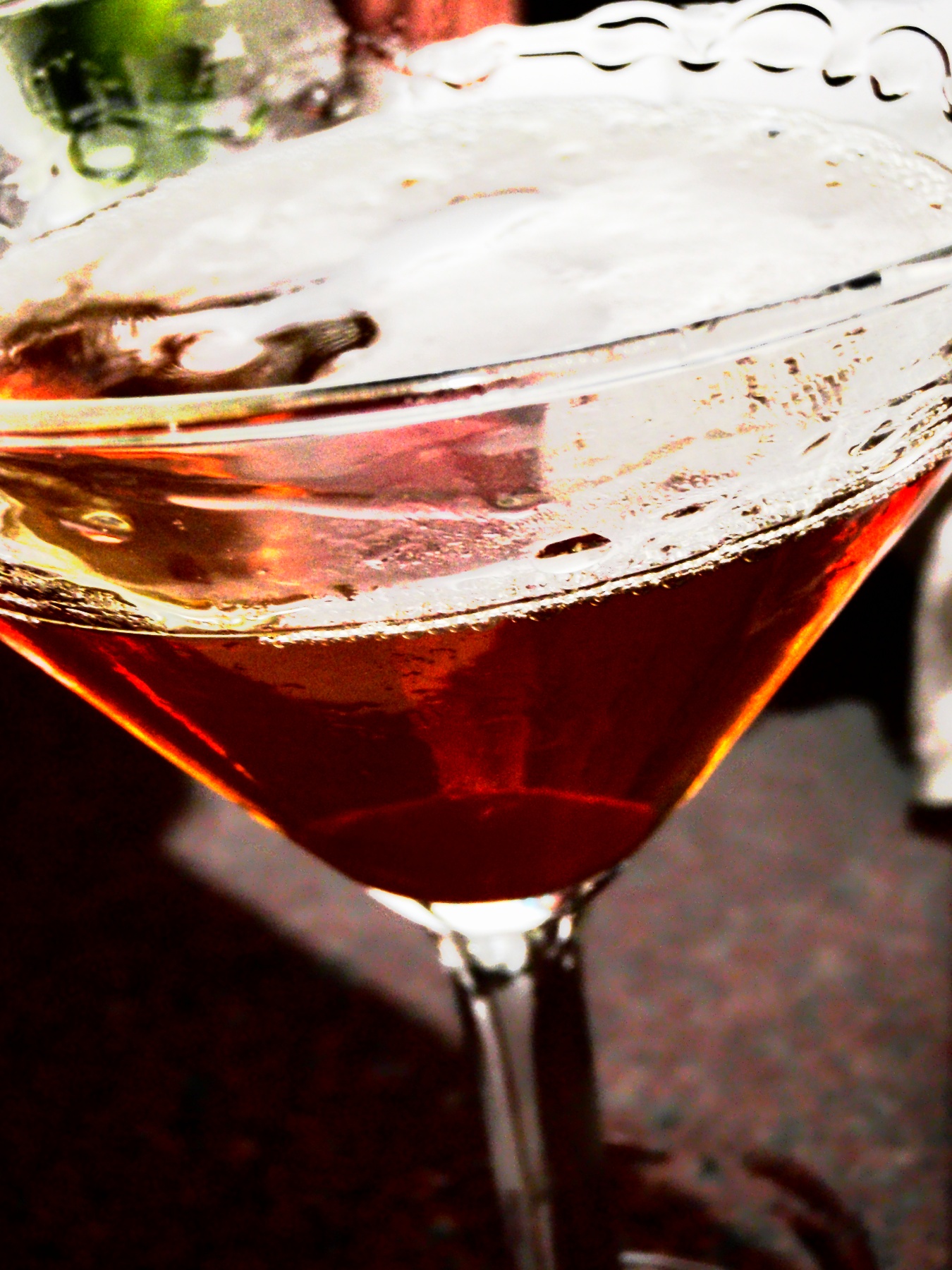 I was a little under the weather and teetotaling last week, and so I found myself late this weekend with a decision. I could take a week off from our little weekly get together. I could make a drink exactly once or maybe twice and call it a day…something I really don’t like to do. Or, I could fall back on a drink I frequently make that I somehow haven’t written up here before.
I was a little under the weather and teetotaling last week, and so I found myself late this weekend with a decision. I could take a week off from our little weekly get together. I could make a drink exactly once or maybe twice and call it a day…something I really don’t like to do. Or, I could fall back on a drink I frequently make that I somehow haven’t written up here before.








